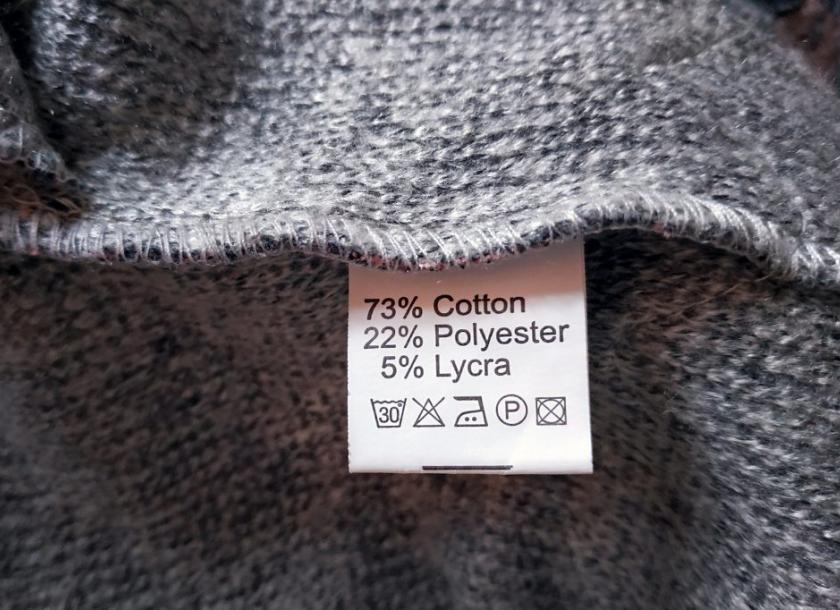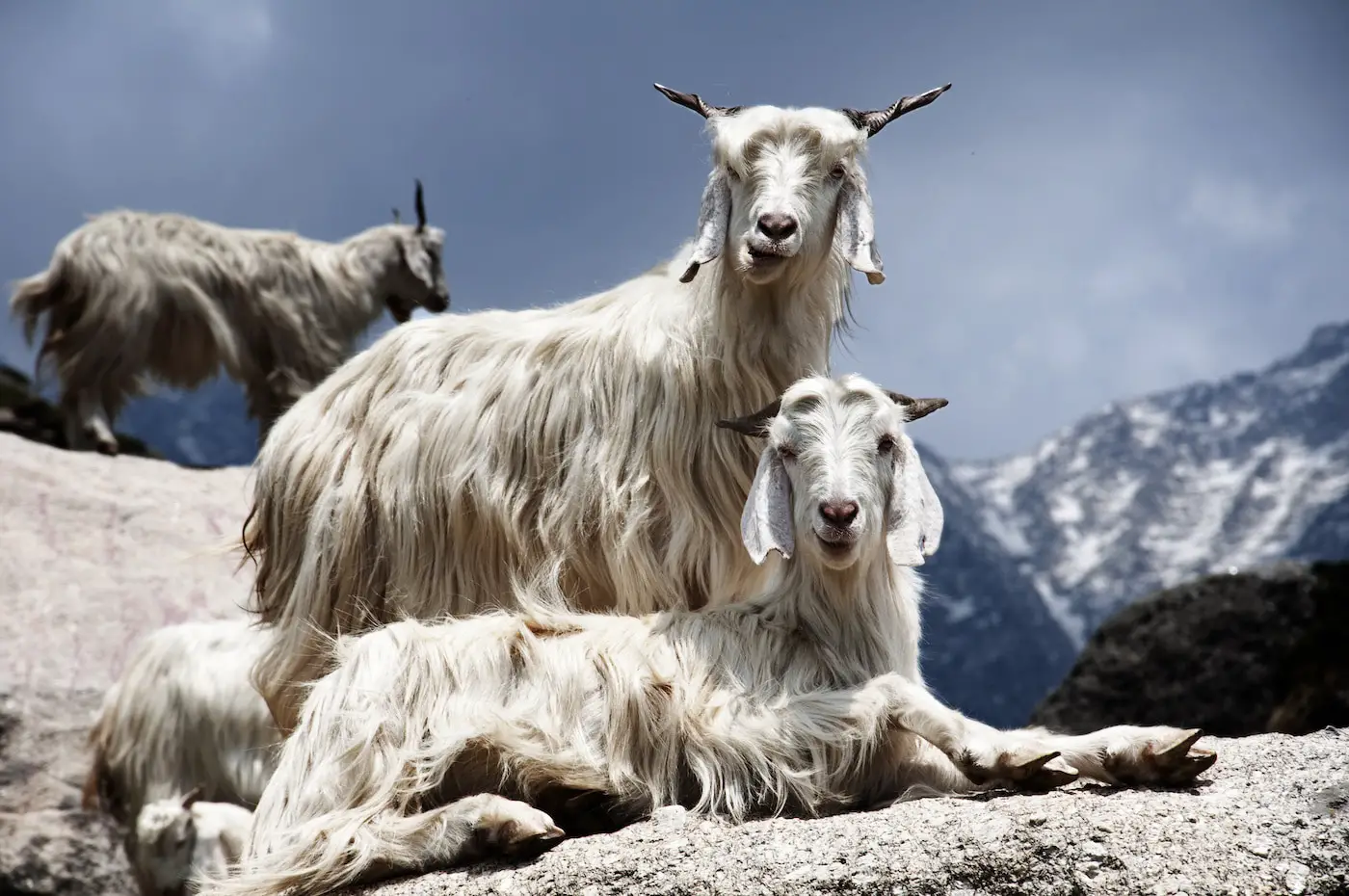When cold weather hits, you need to keep warm. Many people wear multiple layers to stave off catching a cold or the flu during the winter months. While there are plenty of natural fabrics that are used in the making of warm garments (ie. cotton, linen), high-end fabrics also exist and provide a warmer, more luxurious clothing for dealing with the cold.
Pashmina is one of these top-tier fabrics, but ethical questions abound when it comes to wearing this garment, which is sourced from animals. Vegans especially will not wear such clothing, as their philosophy of avoiding any products that result from the exploitation of animals is a deeply ingrained one they stringently follow.
What Is Pashmina?
Pashmina, in its purest form, is cashmere, which is a wool that is obtained from the fibers of mountain goats. Its an extremely warm fabric that is both lightweight and soft to the touch, and most commonly produced in the form of shawls or scarves. These shawls are often referred to as a shahtoosh, although shahtoosh is also referred as the wool from Tibetan chiru antelopes.
The word “pashmina” is derived from the ancient Persian word “pashm”, which was used to describe any fiber that could be weaved. These fibers could be anything from pashmina, to shahtoosh, or even cotton. Over time, pashmina has become a term that refers to the wool itself, or products made from the wool.
The pashmina fabric is sometimes mixed with silk to give it a more stylish and versatile use. However, due to the controversial measures that are taken to produce such a garment, many countries have made it illegal to sell or possess pashmina shawls. The endangerment of the species that has resulted from the creation of pashmina products, as well as the ethical questions raised surrounding their production, is the cause of this illegality.
What Is It Made Of?
Pashmina is made from the hair of goats that live in the mountainous regions of Kashmir, China, and Mongolia. As these goats live in high-altitudes and have very little body fat, they need to have some sort of protection against the elements in order to survive. This is made possible by the double layers of wool their bodies are covered in. The outer layer, known as guard hair, is coarse, straight wool, while the inner layer is a fine and soft undercoat of wool.

Obviously, shearing is nothing new when it comes to producing wool for human consumption. The moral issue that arises when it comes to the production of pashmina is that de-hairing these goats is often painful, cruel, and in most instances, deadly. The removal of their hair leaves them with no protection against the freezing temperatures they need to endure while living in the mountains. As the climate can fall all the way down to -40C, these goats end up extremely susceptible to illness, and sadly, don’t last long.
Looking at the numbers paints a pretty dismal picture when it comes to the production of pashmina fabric. A single goat can only produce 80 to 170 grams of fibers each year. This means it would take 4 years for that goat to produce enough fibers to make 1 sweater. Additionally, a pashmina shawl requires the fibers of 2 to 3 goats. Breaking down the numbers this way gives you an eye-opening idea of how many goats are needed to produce such a large number of pashmina garments.
Pashmina vs. Cashmere
These are two fabrics that are often confused, but at their base level, both pashmina and cashmere are in fact, cashmere. In the western world, cashmere a more familiar term, whereas pashmina is a more common term in areas of the world where this fabric is produced. Generally speaking, they’re both a soft material for making garments, but pashmina is widely accepted as the more refined, higher quality/status material when comparing the two.
Pashmina is sourced from the undercoat fibers of mountain goats that live in altitudes above 4000 meters. The undercoat fibers are softer and more lightweight than the outercoat wool these goats produce. Cashmere, while still soft, is a more coarse fabric compared to pashmina. This is because cashmere is obtained from a wider range of goat subspecies, so it’s not as consistent in its quality.

With cashmere being more coarse is has a diameter of between 16 and 19 microns, while pashmina measures between 10 and 16 microns. This makes cashmere a slightly heavier fabric that excels in keeping you warm, but isn’t as luxurious feeling as pashmina.
Additionally, driving up the value of pashmina is the fact its sourced only in the winter months from specific goats. As each goat can only generate a small return of 80 to 170 grams per year, this scarcity of wool adds to its premium status. Finally, pashmina does take a bit more expertise to properly treat and spin it, as it is lighter and thinner than cashmere.
Are Goats Killed For Pashmina?
This is where ethical questions arise, as well as conflicting information when it comes to the treatment of goats for pashmina production. Are goats killed for pashmina? Probably. But maybe not in the ways we would imagine. However, the statistics show certain species such as the Tibetan chiru antelope is now on the endangered species list, and their coats are used to produce shahtoosh shawls. Landing on such a list is most likely related to the harvesting of their coats. On the other hand, others will argue that no animals are killed because why would someone kill the animal that is providing a source of livelihood for them and their family?
Where these goats and antelopes are most likely dying for these garments, is after the hair removal process is over. These animals live in subzero climates, which is why their coats are sought after in the first place. When they are stripped of them (oftentimes in the dead of winter when their coat is at its peak), they have no defense against cold climate conditions. This leads to them developing an illness from which they can’t recover from, or just freezing to death. There have also been reports that some goats are killed if they have an inadequate coat, as they simply aren’t needed.
Whatever the case may be, at the bare minimum, harvesting the wool from these creatures is painful and cruel. Unlike sheep who are sheared, goats have finer wool that needs to be preserved, and this is done by using a long comb to rip the hair from the goat’s body. Anyone who has had their hair pulled can attest to how painful this can be.
What Are The Cruelty-Free, Vegan Alternatives to Pashmina?
Pashmina communicates status and provides a refined garment that keeps you warm. Yet, there are plenty of fabric alternatives that can be used during the winter months, without endangering the welfare of animals.

If you want to keep things “au natural”, you can find comfortable sweaters and cardigans that are made from cotton, and to a lesser extent, hemp and linen. Additionally, there are synthetic fabrics like polyester, nylon, and rayon that can keep you warm as well. In many cases, you will find clothing that uses a blend of both, ensuring no animals were harmed in their production process.
Final Words
Pashmina is a beautiful fabric that gives people a sense of luxury and warmth. Garments that are made from this type of fabric have always been in demand historically, but with the world constantly evolving, and people gaining a larger awareness on the complexities of life, the harvesting of this fabric from mountain goats is something that should cause pause for any compassionate individual. With various alternatives available, there should be no reason anyone should feel the need to wear pashmina in these current times.

